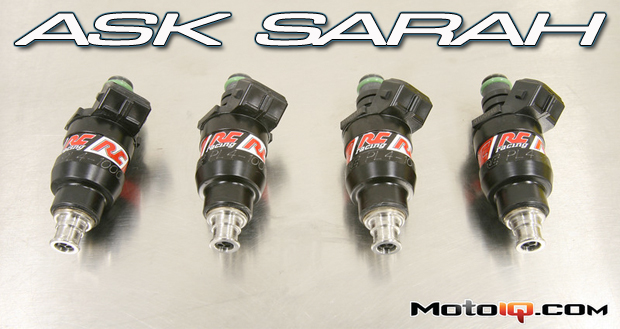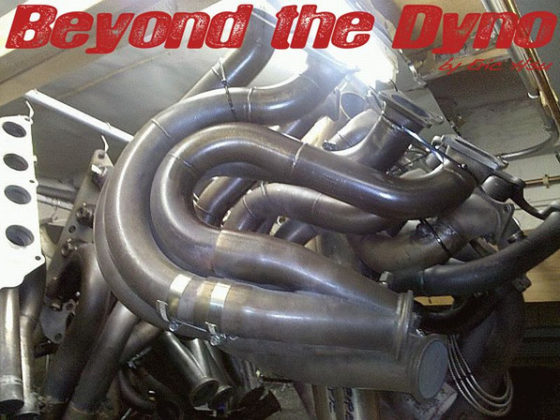
Dear Sarah,
I own a 2001 Mitsubishi Evolution VII and I believe I have lifted the head on the car. I ran around 29psi on a near stock engine (oem turbo) with E85 and pressurized the cooling system. The car runs and drives fine if I drive modestly and squirts coolant if I push really hard. Due to this, I am pulling the engine and upgrading the head studs, checking the cylinder head to ensure a flat sealing surface and doing a little minor maintenance.
So on to the questions. I plan on pushing the engine even harder once back together, but I have a budget smaller than MC Hammer's nest egg. I am debating doing a minor build with reliability in mind as I road race regularly.
-Is it ok to install OEM sized forged pistons without machining the block in any way?
-Is there any work I need to do to the crankshaft if I am installing forged connecting rods?
I will of course check all clearances and use proper torque and bolt stretch techniques when putting everything together. I also plan to have the entire rotating assembly balanced. I just don't want to have some local machine shop working on an engine they are unfamiliar with and I can't afford the work of a major shop I would have to ship to (I'm located in the Midwest). This is all assuming the engine is in tip top shape when torn down. Thank you for your time and any other cheapo suggestions of things to do or check while I am pulling the engine, I would appreciate.
Dan O'Donnell
Got a Tech Question? Email Sarah at asksarah@motoiq.com
I’ve decided to overlook your reference to a washed up 1990’s rapper so let me “break it down!” First, repeat after me- you can’t go reliably fast if your wallet is on a diet! Although you haven’t given me enough information to properly answer your question as I don't know what other parts are on your car, I will give it a guess assuming you are not spending much money on your 4G63 to begin with. Your current setup includes too small a turbo and probably too undersized a fuel system for those boost levels. Let’s start with the stock turbo on the Evo VII.

The TD05HR 16G6 turbo makes proportionally smaller power output for increasing boost levels past 24psi. At 29psi, the turbo is operating so inefficiently the compressor hits choke conditions. This is where the efficiency falls to less than 50 percent and the compressor is running in the area out of the efficiency islands of the compressor map. To make high levels of boost in chock flow conditions requires a lot of shaft power that the turbine needs to recover from the exhaust stream. With the turbine biting hard, backpressure increases greatly.
The high backpressure begins to greatly exceed the boost pressure and the engine starts to have a hard time getting rid of exhaust gasses and heat from the cylinders. The retained exhaust gas and heat, the boost pressure coming in and all the retained backpressure from the exhaust not only increases the overall cylinder pressure and pumping losses, it also creates conditions ripe for engine destroying detonation. No wonder why you lifted the head. When you put the engine back together, invest in something more properly sized for those boost conditions such as a GT35, which will make the same power at around 18psi and put less stress on both the turbo and the engine. With the proper combination of parts and tuning, you can probably make the same power at 22 psi safely with the stock turbo as you are trying to do at 29 psi.

All of this backpressure and heat coupled to running E85 fuel with an improperly sized fuel system, you were easily operating under lean conditions. E85 is a blend of 85% ethanol and 15% gasoline. It’s cheap (when compared to race fuel) and higher octane than typical pump gas but it has a lower overall energy density, meaning you must run a greater volume of E85 (roughly 30-40 percent) than gasoline in order to provide an equivalent fuel mixture for controlled combustion.

The stock EVO fuel pump and injectors are not even close to providing enough fuel for running E85, especially at those boost levels. The injector duty cycle is maxed out with the stock injectors and a stock fuel pump would be strained as well. Larger injectors and a higher volume fuel pump are necessary to deliver enough fuel for a safe mixture. I would recommend RC1000cc injectors and a Walburo 255 l/hr pump for E85 operation although the stock ECU must be reflashed to run correctly with these larger injectors. The ECU flash software can be cheaply downloaded for you to do this.

Although E85 is rated with an octane rating of 104, many people are discovering that the octane of E85 can be inconsistent depending on how well the fuel is blended to how long it has been sitting around, another reason not to run such a high boost pressure.



